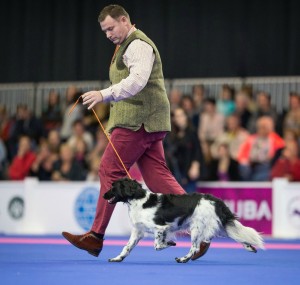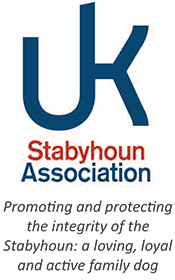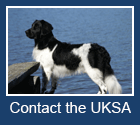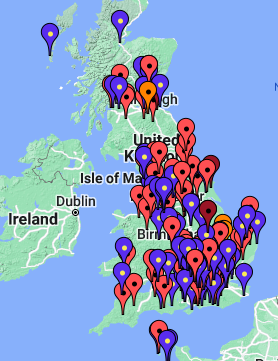At our September event, Klaas Zonnebeld from Stabijhounkennel Fan it Heideheim and Gerrit V. D. Veen had travelled from the Netherlands to perform and teach us about the ‘inventory’. Now, Klaas explains why…

Lobke Fan it Heideheim
We always love to see Stabijs and, in such a small breed, dogs in other countries are very important. In isolation, it is all too easy to distort a population. Therefore, the Stabij breeding experts in the Netherlands are strict. They also appreciate that, within a couple of years, your dogs could play a part in preserving the genetic diversity of our breed globally.
All breeding Stabij must pass certain assessments but, overall, the dogs should meet the physical character and behaviour requirements as specified in the breed standard.
All breeding dogs should also ideally have undergone an official inventory by a qualified ‘Inventarisator’ before a mating. But this exercise is not just important for those who hope to breed. Allowing your dog to be measured helps us monitor key features of the whole population.
The inventory was established in 1980 to gain an understanding of which health problems were present in our breed; how often they occur and whether there were enough healthy dogs to continue breeding. Because we also see a lot of variation in the looks of the Stabij, sizes and key breed characteristics were later added. Inventory is not a test that you can pass or fail – we simply describe your dog’s looks, health and character on paper. Judges look at the appearance of a dog. We record the facts and take careful measurements.
During the inventory, your dog is measured as follows: The height at the withers, its body length, the dimensions of the head, circumference of the chest and the length of the legs. The weight is noted too. In addition, the following are examined and described: Forehead, nose, teeth, eyes, ears, fur, tail, body, legs and gait. The Inventarisator also asks whether the owner has experienced any problems, notes how and where the dog lives, and what they are fed. Finally, comments are made about the nature and behaviour of the dog. All in all, it takes about 30 minutes. The data plus photographs are entered into that dog’s individual profile on our breed database, ZooEasy.
For breeders, all of this information helps inform decisions about which combinations are sensible. Data about a dog and its relatives gives a more complete picture of which traits the parents are passing on. The breeding experts use the information to make sure no two ‘extremes’ are combined.
Over time, this data allows us to measure changes in the population. If necessary, action can then be taken to prevent unwanted developments in looks or behaviour. And now, your very own
Gerrit and I had a wonderful time in the UK. We were impressed by the quality of your dogs and hope that you all feel responsible for your role in preserving this truly special breed.








